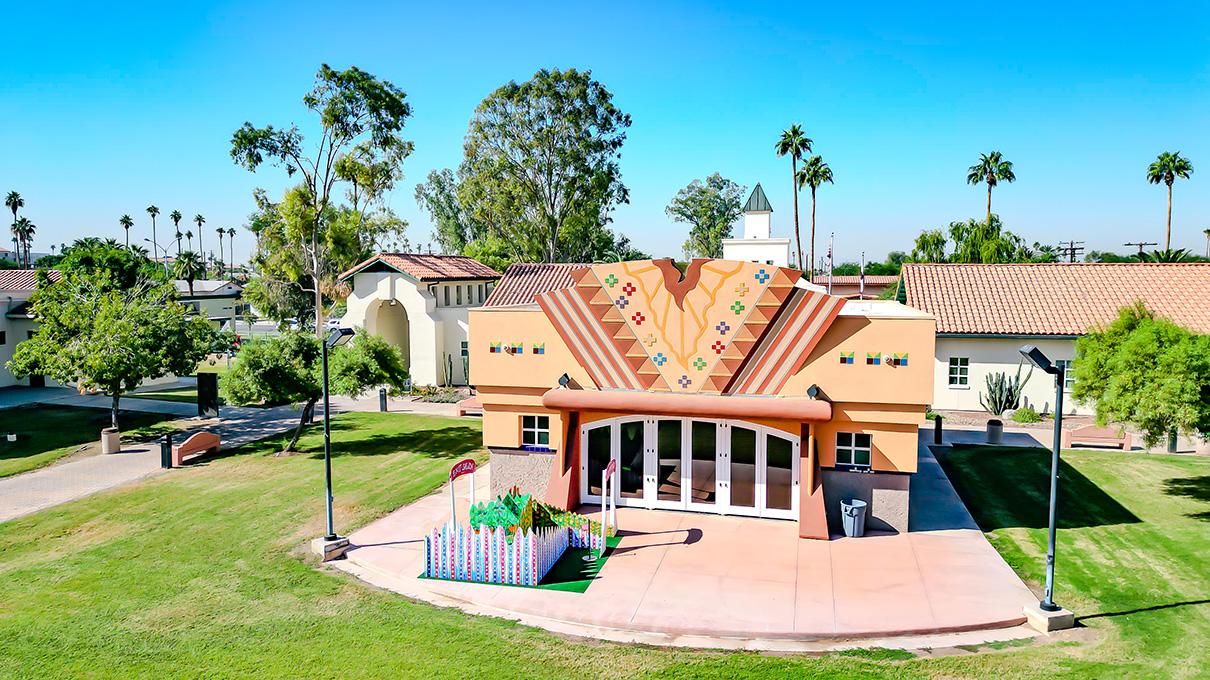River Park at SDSU Mission Valley Gets Underway: Nature, Recreation and Ready Next Year
A groundbreaking ceremony attended by San Diego Mayor Todd Gloria kicked off the project, shaped by broad community input.

San Diego State University held a groundbreaking ceremony Wednesday, April 20, to celebrate the beginning of construction on the river park at SDSU Mission Valley, commemorating another major milestone in the overall development of the site since the university took ownership in August 2020.
“The river park is being built by our community for our community,” said Gina Jacobs, associate vice president for the SDSU Mission Valley Development.
Community input was key to the planning and design of the much-anticipated park, which will soon serve the region as a recreational hub and educational tool upon completion late next year.
Jacobs kicked off the event by acknowledging the River Park Advisory Group, San Diego River Conservancy, San Diego River Park Foundation, Kumeyaay Diegueno Land Conservancy, and several other groups and individuals whose support, contributions, feedback and involvement were paramount to delivering on the collective vision of the park now under construction.
At the start of the ceremony, Jacob Alvarado Waipuk, chair of Tribal Relations and SDSU Tribal Liaison, shared the formal SDSU Kumeyaay Land Acknowledgement, which recognizes and honors the origins of the land where SDSU resides and where the river park is being built.
The park, some of which is situated along the San Diego Trolley Green Line, is being thoughtfully designed to incorporate interpretive signage, native flora and fauna, and other landscape architectural characteristics that will highlight the rich history, current status as Kumeyaay land, and the recent entertainment and sports connections associated with the 166 acres at the SDSU Mission Valley site.
“We are taking what used to be a vast concrete parking lot surrounding a stadium and converting it into approximately 80 acres of park and open space, including the 34-acre river park along the San Diego River,” said SDSU President Adela de la Torre. “The park will have something for everyone to enjoy, with more than four miles of pedestrian and biking trails, multi-use recreational fields, basketball courts, fitness equipment, children’s playgrounds, picnic areas, an outdoor classroom, and more amenities.”
In addition to highlighting the many features of the river park, including its facilities and environmental benefits, de la Torre expressed appreciation to Clark Construction Group for leading the design-build efforts and Schmidt Design Group for guiding the community and advocacy groups that provided input into the park design process.
On behalf of the university, she shared gratitude for Ben and Nikki Clay, Mike and Chris Pack, and the Alta and Franklin Grant family, “whose incredibly generous philanthropic gifts will help support the long-term maintenance and operations of the park and open spaces at SDSU Mission Valley for generations.”
“The construction of the river park is a major milestone in a long-awaited project that will revitalize Mission Valley for all of us,” said San Diego Mayor Todd Gloria. “This is a wonderful opportunity for us to reclaim parking spaces and give them back to the people in our community. I can’t wait to see families enjoying the magnificent new river park and look forward to the many benefits [it] will bring not only to the university, but also to our region as a whole.”
Also speaking were San Diego City Council President Sean Elo-Rivera; Councilmember Raul Campillo; and Karla Thompson, executive director of performance and development for San Diego Wave Fútbol Club, the professional women’s soccer team who will be playing their home games in Snapdragon Stadium after it opens in September.
As a token of appreciation, the SDSU Mission Valley Team gifted white sage plants to those in attendance, chosen because white sage will be one of the more than 60 varieties of native plant species and drought-tolerant landscaping included in the park design. Invitees were also asked to write a note and take a picture to put in a time capsule to be buried on the site.
The groundbreaking ceremony concluded with the ceremonial planting of a Coast Live Oak — a tree native to the region — that served as a tribute to the legacy of this inherited land and SDSU’s commitment to include native plants as part of the river park design, which all will have an opportunity to enjoy next year.


